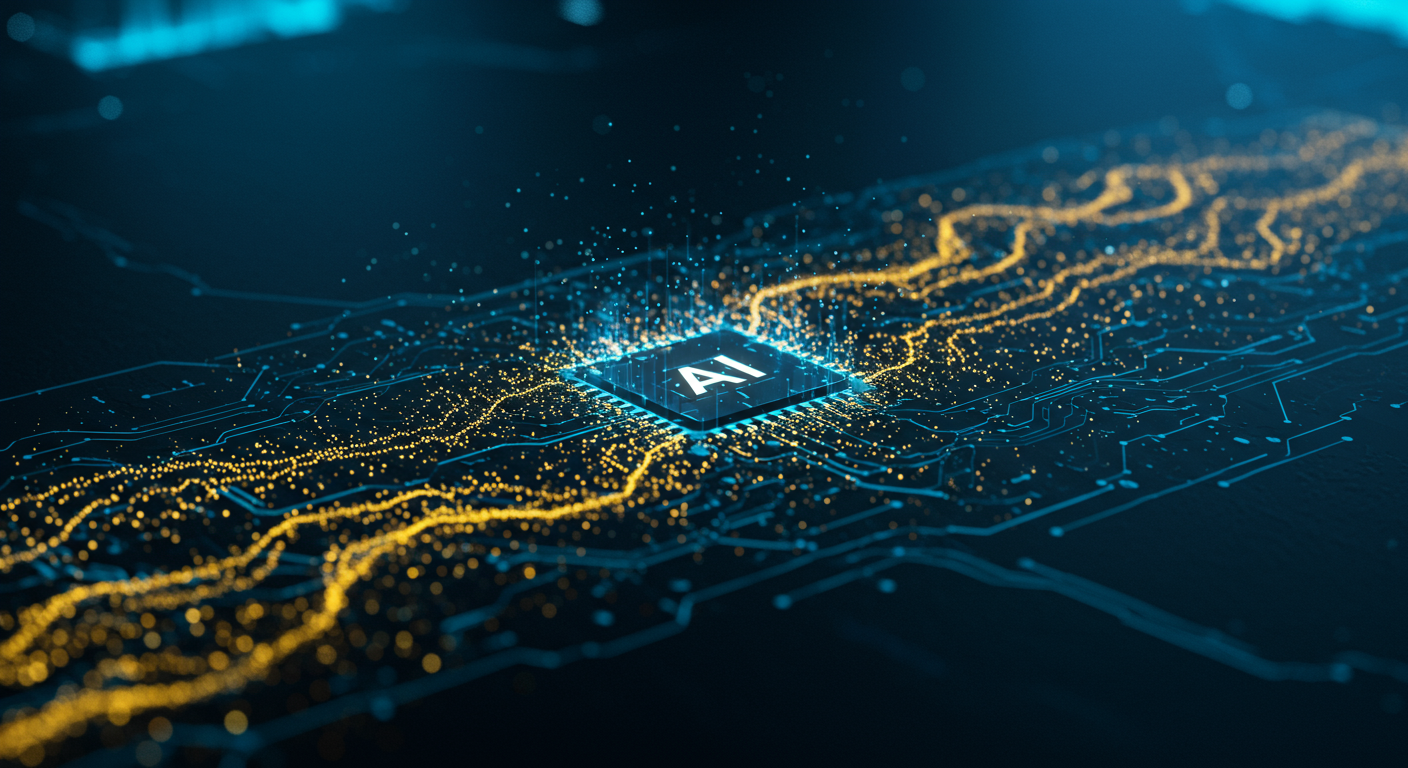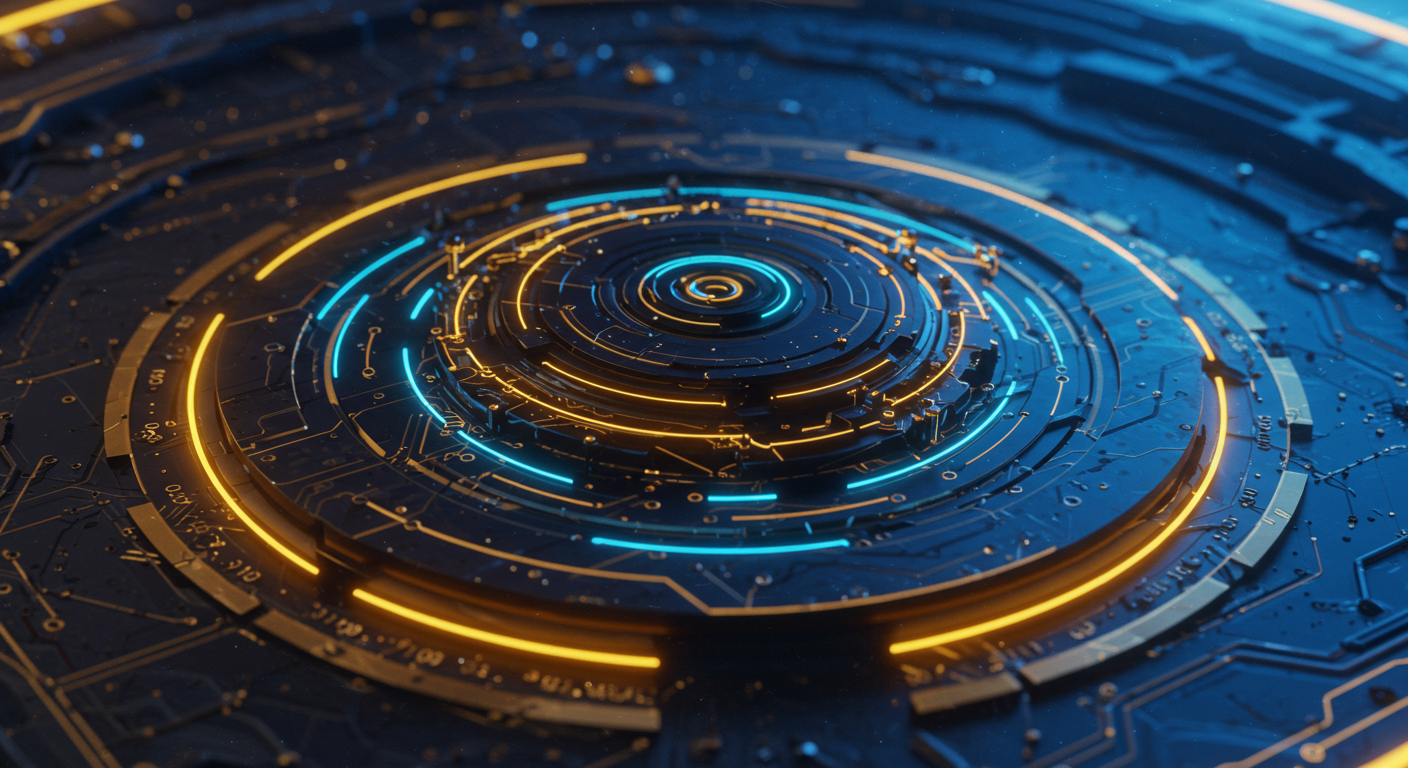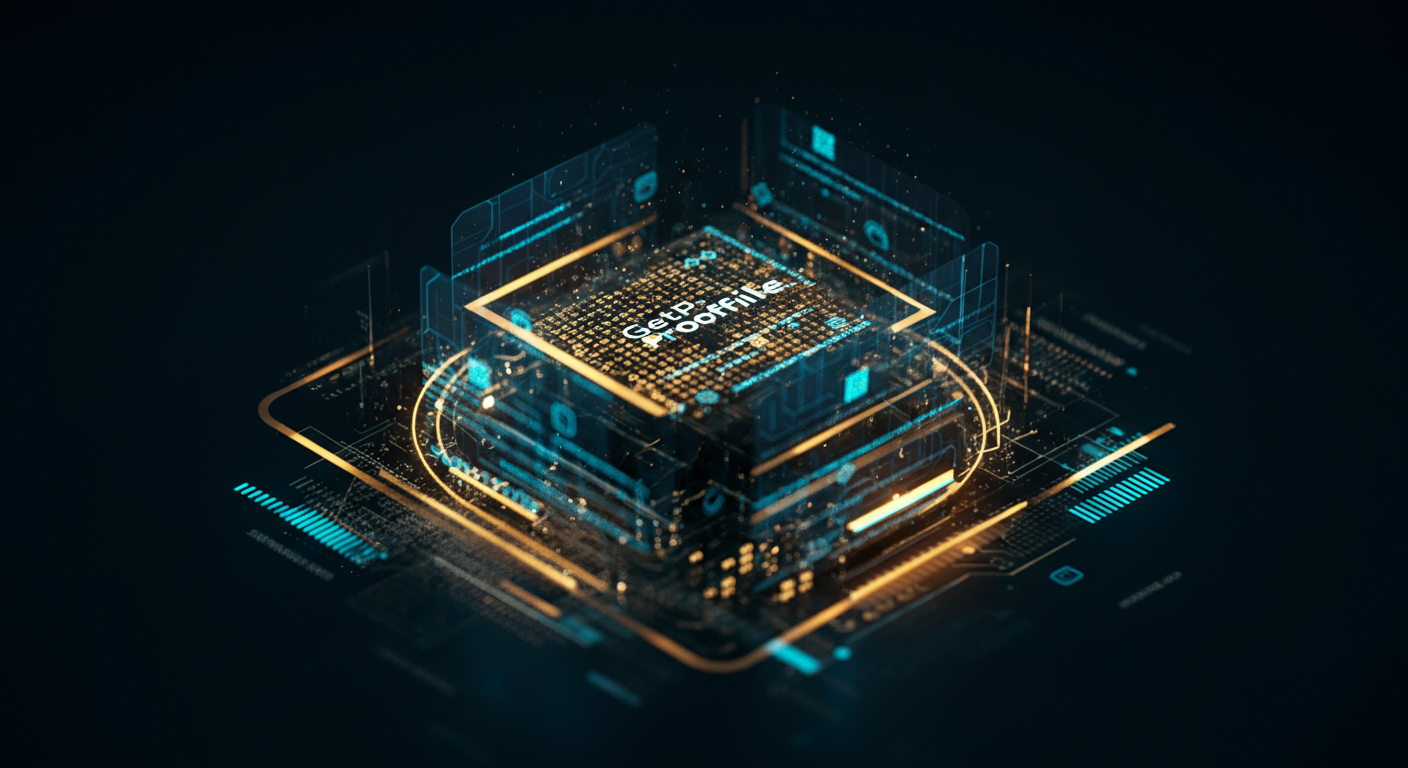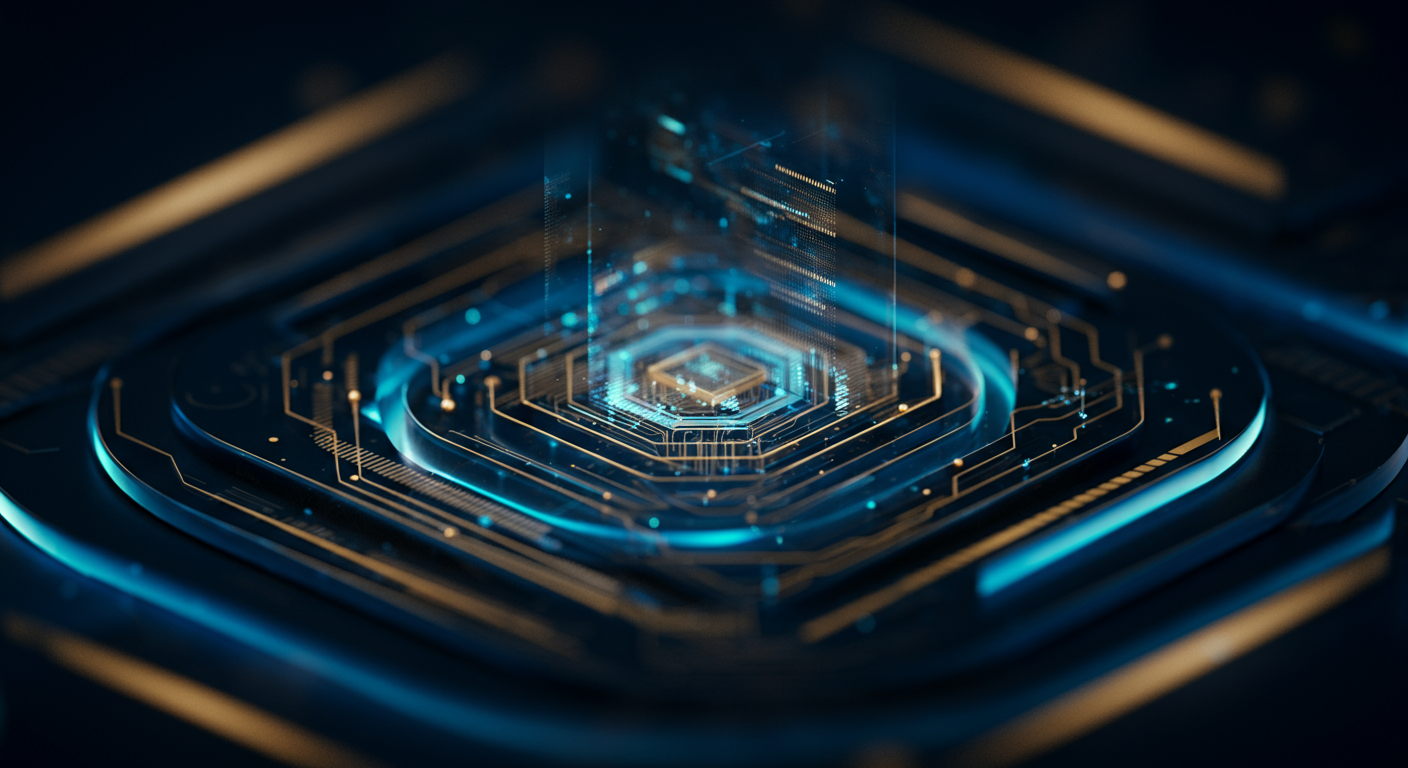AI Engineer Takeover: Navigating the Perils of Complete Automation

Here's how AI engineering could reshape industries, but total automation isn't quite the utopia some imagine.
The Allure of AI Engineering: Efficiency and the Bottom Line
The promise of AI in engineering is a seductive one: imagine a world where algorithms design, test, and deploy solutions with minimal human intervention. Initial excitement stems from some key benefits:
- Increased Productivity: AI operates 24/7, churning out designs and analyses without the need for sleep or breaks.
- Reduced Costs: The potential for AI engineering cost savings is significant. Replacing human engineers with AI could drastically cut salaries, benefits, and overhead. Imagine the benefits of AI in engineering if it truly delivered on this promise.
- Eliminating Human Error: AI, in theory, should remove subjective biases and human mistakes from the equation, leading to more objective and efficient outcomes.
The Irony of Objective Algorithms
There's also the alluring idea that AI removes bias – yet AI is trained on human data, absorbing and potentially amplifying existing societal biases. It’s an ironic twist: we seek objective solutions from systems built on subjective inputs. ChatGPT, for example, is a powerful language model, but its responses are only as good as the data it was trained on.Conclusion: The allure of AI engineering is undeniable. Efficiency gains, cost reductions, and 24/7 operation are strong motivators. However, remember that while algorithms don’t get tired, they're only as good as the data they learn from, revealing the limits of complete automation. Next, we'll examine the potential downsides of an AI Engineer Takeover.
It's often said that AI is set to revolutionize code generation, but what happens when the robots' code starts racking up 'technical debt'?
Understanding Technical Debt
Technical debt, in the software world, isn’t about money. It’s the implied cost of rework caused by choosing an easy solution now instead of using a better approach that would take longer. Think of it as taking shortcuts during construction – quick now, but prone to collapse later. AI is great at churning out code fast, but it may not always be good code in the long run.“AI can write code, but can it architect code?”
The Black Box Problem & Debugging
One major challenge is the "black box" problem. How do you debug AI-generated code when you don’t fully understand how the AI arrived at its solution?- AI code can be difficult to maintain. Unlike human-written code, it may lack clear comments or a logical structure.
- Debugging AI generated code debugging becomes a nightmare. The pathways the AI took to reach an output might be opaque, making error tracing a Herculean task.
- The risk of AI creating complex, unmaintainable systems is very real. We might end up with sprawling codebases nobody dares to touch for fear of breaking everything.
The Inevitable Code Crack
As Guide to Finding the Best AI Tool Directory explains, keeping up with the latest AI tools is critical, but remember that even the most sophisticated AI has its limits. The rapid proliferation of AI-generated code could leave future engineers wading through mountains of technical debt, desperately trying to keep systems afloat. What’s the solution? Perhaps a greater focus on explainable AI (XAI) and rigorous code reviews, even for AI-generated code.Innovation Stifled: The Creativity Crisis
Can AI truly replace the spark of human ingenuity in engineering? While AI excels at optimization and pattern recognition, complete reliance can paradoxically limit AI engineering innovation.
The Human Touch: Irreplaceable Intuition
Engineering isn't just about algorithms; it's about intuition honed through experience.
Human engineers bring nuanced understanding, a feel for the unquantifiable, that AI, however sophisticated, currently lacks.
Consider the development of the Dyson vacuum cleaner. James Dyson's relentless tinkering and thousands of prototypes stemmed from a very human drive and intuition, an approach an AI might struggle to replicate.
Bias and the Echo Chamber
AI learns from existing data. But what if that data reflects existing biases or limits exploration of truly novel ideas? We risk creating an echo chamber, reinforcing the status quo and missing out on AI and creativity in engineering.
- Limited Exploration: AI might optimize within known parameters, but miss radical solutions.
- Reinforced Biases: Existing datasets may perpetuate societal biases, impacting design choices.
Lost Innovations: Thinking Outside the Algorithm
Imagine a world where the Post-it note was deemed "unnecessary" by an AI optimizing for productivity because it is "unconventional." Many breakthroughs arise from playful experimentation and serendipitous accidents. With complete AI control, these unexpected leaps forward might never happen.
- Example: The discovery of penicillin – a fortunate accident, unlikely to be "predicted" by an AI.
- Counterpoint: An AI tool directory can be useful in finding AI tools to augment the engineers' research. These directories provide a comprehensive overview of the field, allowing for faster innovation.
Finding the Balance
We must embrace AI's potential while safeguarding the irreplaceable human element. It's about augmentation, not automation to foster long-term AI engineering innovation.
Navigating the integration of AI into engineering demands a deep dive into the ethical considerations that arise.
Bias in Algorithms
AI algorithms are trained on data, and if that data reflects existing societal biases, the AI will perpetuate and even amplify those biases. This can lead to unfair or discriminatory engineering decisions. For example:- An AI designed to evaluate structural designs might favor designs similar to those it was trained on, potentially overlooking innovative solutions.
- Ethical AI Roadmap: A Practical Guide for Responsible AI Implementation – This article offers a deeper understanding of the necessity for AI developers to recognize and address biases to ensure fair and equitable outcomes.
Accountability: Who's to Blame?
When an AI makes a mistake in an engineering project, determining responsibility becomes a complex issue. Is it the AI developer, the engineer who implemented the AI, or the company that deployed it?Who is liable when an autonomous vehicle causes an accident? The same questions arise with AI-driven engineering failures.
Job Displacement and Societal Impact
The complete automation of engineering tasks poses a significant risk of widespread job displacement. This could lead to:- Increased unemployment within the engineering sector
- A need for engineers to retrain and acquire new skills
- Software Developer Tools – Discover how modern software developers can enhance their capabilities with specific AI tools to potentially mitigate job displacement.
- Societal unrest due to increased inequality and economic hardship
The Way Forward
The ethical minefield requires a multi-faceted approach: developing less biased algorithms, establishing clear lines of accountability, and proactively addressing job displacement through education and training initiatives. It is up to us to manage the ethical considerations in AI engineering to promote responsible use, and be vigilant about spotting AI bias in engineering.Here's a look at how AI augmentation creates a more sustainable engineering ecosystem.
The Pitfalls of Full Automation
While the promise of complete AI automation in engineering might seem attractive, a balanced approach that combines the strengths of AI with human expertise is more sustainable. Over-reliance on AI can lead to deskilling, loss of crucial problem-solving abilities, and potential ethical blind spots.Augmenting Human Ingenuity
Instead of replacing engineers, AI can augment their capabilities, freeing them up for more creative and strategic tasks.- AI can handle repetitive tasks: Automating simulations and data analysis
- Humans can focus on innovation: Conceptual design and ethical oversight
AI-Assisted Engineering: The Sweet Spot
The concept of 'AI-assisted engineering' leverages AI to enhance, not replace, human intellect. This human AI collaboration in engineering allows for:- Faster prototyping
- Improved designs
- Reduced errors
Examples in Action
Successful AI assisted engineering is already evident:- AI algorithms optimize structural designs in civil engineering, ensuring safety and efficiency.
- Machine learning models predict material behavior, accelerating material science research.
- GitHub Copilot, an AI pair programmer, assists software developers by suggesting code and automating repetitive tasks.
As AI continues its rapid ascent, the engineering landscape is undergoing a seismic shift.
The Evolving Skillset
Traditional engineering skills remain foundational, but the ability to effectively leverage AI tools is becoming paramount.Data Literacy: Engineers need to understand data structures, analysis, and how to interpret AI-driven insights. Think of it as moving beyond knowing how an engine works to understanding the data that optimizes its performance*.
- AI Tool Proficiency: Familiarity with AI platforms and frameworks is crucial. For instance, engineers can leverage Software Developer Tools to boost productivity.
- Algorithmic Thinking: Understanding algorithms, even without deep coding expertise, enables engineers to critically evaluate and apply AI solutions.
Retraining Imperative
The need for retraining and upskilling isn't just a suggestion; it's an existential imperative.- Bridging the Gap: Targeted training programs can equip experienced engineers with the new skills demanded by AI.
- Lifelong Learning: The pace of AI evolution necessitates a commitment to continuous learning through online courses, workshops, and industry events.
Emerging Roles and Responsibilities

AI isn't replacing engineers; it's creating new, specialized roles.
- AI Integration Specialists: These engineers focus on seamlessly integrating AI into existing systems and workflows.
- AI Ethics Officers: Ensuring the responsible and ethical use of AI becomes a critical responsibility, requiring engineers to champion fairness and transparency. This directly relates to understanding AI Legislation .
- Human-AI Collaboration Managers: These professionals will be experts in optimizing the interplay between human expertise and AI capabilities.
Here's how complete automation by AI engineers could inadvertently unlock pandora’s box.
Security Risks Amplified: Vulnerabilities in the Age of AI
AI-driven engineering systems, while revolutionary, introduce AI engineering security risks, creating new avenues for exploitation. The complexity and autonomy of these systems can obscure vulnerabilities, making them harder to detect and patch, thereby amplifying potential damage.
- Increased Attack Surface: As AI manages more critical infrastructure, it presents a larger, more attractive target for malicious actors.
- Data Poisoning: Adversaries could manipulate the training data, causing AI systems to make flawed decisions or introduce vulnerabilities. Imagine an AI designing a bridge, but because its training data is corrupted, the bridge's design is inherently flawed.
- Adversarial Attacks: Direct attacks on AI algorithms can trick systems into misinterpreting data, leading to system malfunction or data breaches.
Exploitable AI: A Malicious Actor's Playground
AI systems are not inherently immune to malicious use. They are tools, and like any tool, they can be wielded for harm. The potential for AI to be exploited creates critical cybersecurity in AI engineering concerns.
- Autonomous Attacks: AI can automate sophisticated cyberattacks, making them faster, more adaptive, and harder to trace.
- Bypass Security Measures: AI could be used to identify and exploit weaknesses in existing security protocols, circumventing traditional defenses.
- Deepfakes and Social Engineering: AI-generated fake content can be used to manipulate engineers, gain unauthorized access, or spread misinformation, leading to security compromises.
Robust Measures: Shielding AI Infrastructure

Protecting AI-powered infrastructure requires a multi-faceted approach and AI-specific security protocols, demanding a blend of vigilance and innovation. One critical element is ensuring data privacy, which can be enhanced using techniques like differential privacy (DP) – a system that adds noise to datasets, balancing privacy and utility.
- AI-Specific Security Audits: Regular audits to identify and mitigate AI-related vulnerabilities.
- Red Teaming: Employing ethical hackers to test the robustness of AI security measures through simulated attacks (see red-teaming AI).
- Robust Data Validation: Implementing rigorous checks to ensure the integrity and security of AI training data.
- Explainable AI (XAI): Tools to understand the reasoning behind AI decisions to uncover biases or vulnerabilities (learn more about explainable AI (XAI)).
Keywords
AI engineering, artificial intelligence, automation, engineering jobs, technical debt, AI bias, ethical AI, AI safety, human-AI collaboration, AI security, AI risks, AI vulnerabilities, AI governance, AI in software development, AI-assisted engineering
Hashtags
#AIEngineering #ArtificialIntelligence #AIEthics #AISafety #FutureOfWork
Recommended AI tools
ChatGPT
Conversational AI
AI research, productivity, and conversation—smarter thinking, deeper insights.
Sora
Video Generation
Create stunning, realistic videos and audio from text, images, or video—remix and collaborate with Sora, OpenAI’s advanced generative video app.
Google Gemini
Conversational AI
Your everyday Google AI assistant for creativity, research, and productivity
Perplexity
Search & Discovery
Clear answers from reliable sources, powered by AI.
DeepSeek
Conversational AI
Efficient open-weight AI models for advanced reasoning and research
Freepik AI Image Generator
Image Generation
Generate on-brand AI images from text, sketches, or photos—fast, realistic, and ready for commercial use.
About the Author

Written by
Dr. William Bobos
Dr. William Bobos (known as 'Dr. Bob') is a long-time AI expert focused on practical evaluations of AI tools and frameworks. He frequently tests new releases, reads academic papers, and tracks industry news to translate breakthroughs into real-world use. At Best AI Tools, he curates clear, actionable insights for builders, researchers, and decision-makers.
More from Dr.

